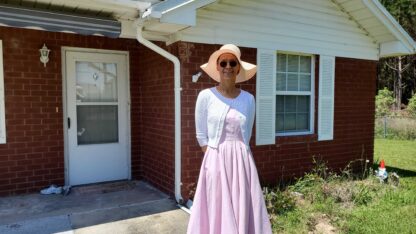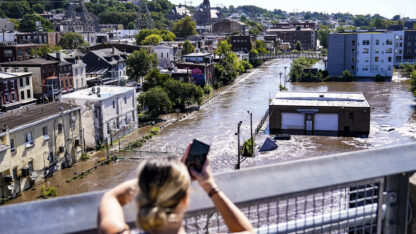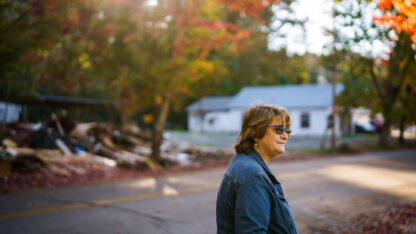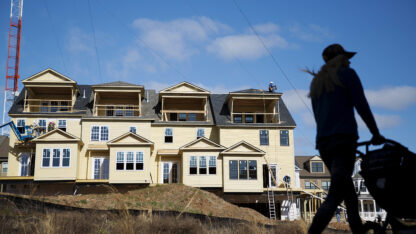Georgians rocked by hurricanes prepare for future storms
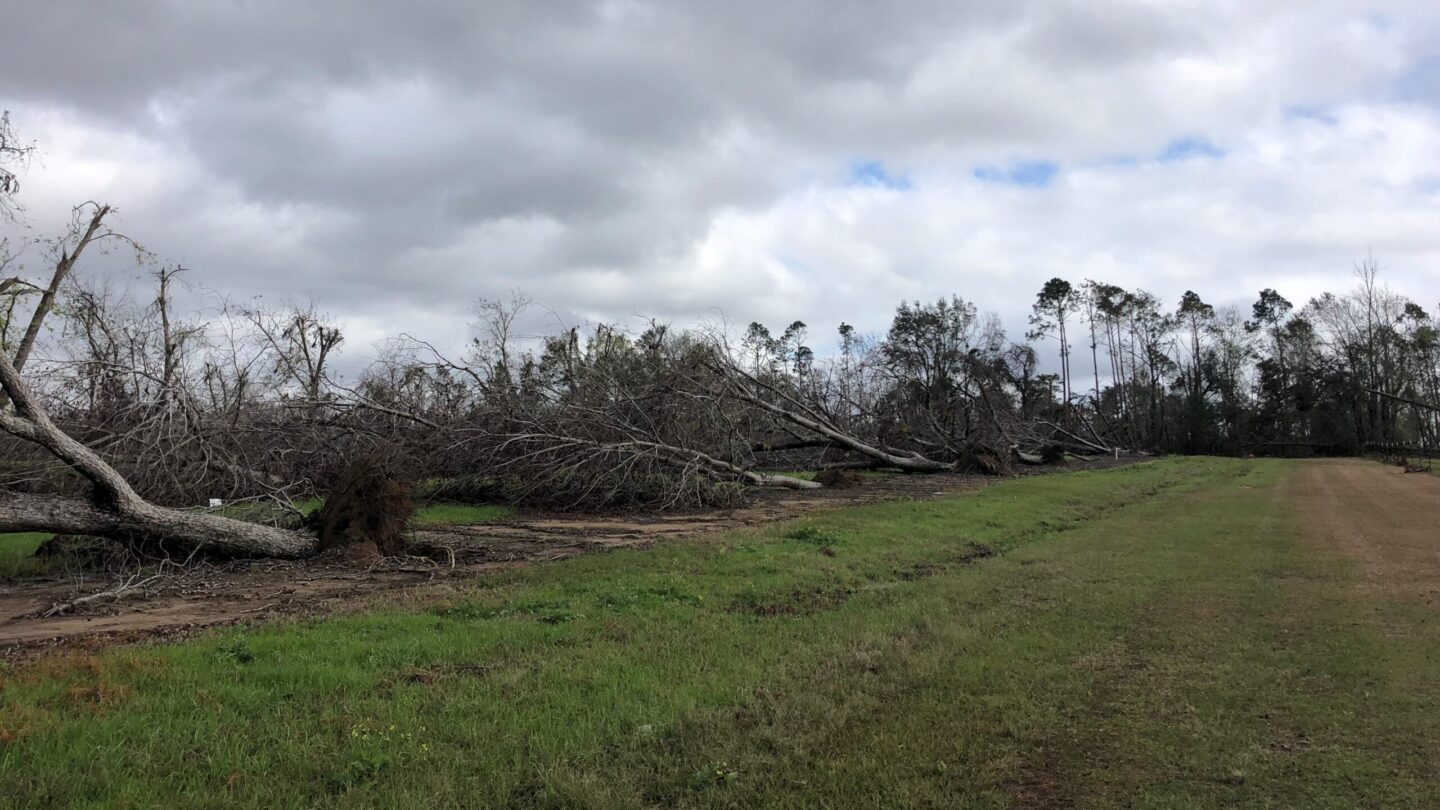
When Hurricane Matthew passed offshore of Georgia in 2016, it tore down trees, damaged houses and flooded much of the coast. But Larry and Donna Piper didn’t get much water — about two inches in part of their marshfront home on Tybee Island. So when Hurricane Irma came less than a year later, they decided to stay put rather than evacuate again.
“The water just kept coming and coming,” said Larry Piper of Irma, which hit right at high tide. “I took all my sandbags at the back door and deposited them in the front yard. That’s how swift the current was.”
They had four feet of water on their property, and more than two feet inside the house. And that meant everything — floor, sheetrock, appliances — had to go.
“I tore it all the way down to the tin roof and the studs,” said Piper.
It was the same at nearly every house on their street, which sits on the back side of the island with marsh on both sides.
“As you can see, most of them were fairly modest homes,” said George Shaw, the City of Tybee’s community development director. “And this was, you know, a working class neighborhood. This was not fancy beachfront homes.”
Most houses on the street aren’t vacation houses; they’re primary residences.
“Some folks were able to save some stuff,” said Shaw of the damage. “But after Irma, every yard had a giant pile in front of it. Full of stuff.”
Most of those houses, including the Pipers,’ sat only a foot or two off the ground. So the city applied for, and received, a federal grant to elevate houses — most of them on this street. The Pipers’ house now stands almost 11 feet off the ground on concrete columns, high enough to park their cars under and hopefully high enough to stay dry.
As another hurricane season approaches, home elevation is just one way that Georgians devastated by hurricanes in recent years are preparing.
The storms drove home how vulnerable much of the state is and highlighted unforeseen dangers. As climate change makes storms stronger, steps to keep people and property safe are more essential than ever.
“This is not looming. This is not ‘it’s coming.’ It’s here,” said Marshall Shepherd, the director of UGA’s atmospheric sciences program. “So what are we doing about it? Who’s most impacted? And how do we move forward from a policy and a sort of societal fabric standpoint, to deal with it?”
Leaders all over Georgia are grappling with those questions, made all the more urgent by recent experience.
A series of devastating storms
Hurricane Matthew passed Georgia in October 2016, and while it stayed offshore it brought tropical storm-force winds and a storm surge of more than seven feet over the normal high tide. The storm ripped down so many trees and branches that it shattered the Army Corps of Engineers’ models predicting storm debris.
Just 11 months later, Hurricane Irma hit, in September 2017. That storm traveled over land up the Florida peninsula and into Georgia, where it caused widespread flooding along the coastal marshes. Coupled with heavy rainfall in the days prior to the storm, Irma overwhelmed stormwater systems on the southern portion of the coast, making the flooding worse.
Both storms prompted mandatory evacuations of all of Georgia’s coastal counties. The coast evacuated again for Hurricane Dorian in September 2019. That storm caused minimal flooding, but that was a matter of lucky timing: Dorian’s storm surge matched the forecasts, but the storm coincided with low tide.
Hurricane Michael, meanwhile, exposed dangers of climate change that experts hadn’t focused on before.
In October 2018, Michael made landfall in the Florida Panhandle as a category-five hurricane — the first storm that strong to do so in the mainland U.S. It was still a category-two storm when it reached Southwest Georgia, eventually weakening to a tropical storm as it crossed the state.
“If you’d asked me five years ago, what would I be most worried about in the southern part of the state in terms of climate vulnerability, I would have said drought and its impact on agriculture,” Shepherd said. “Now I would have to say drought, plus perhaps the impact of really strong hurricanes that maintain their intensity as they move further inland.”
Scientists say that hurricanes won’t necessarily get more frequent as climate change intensifies, but they will get stronger, on average. It’s already happening. And if storms are stronger to begin with, even as they weaken over land they’ll be stronger than they were in decades past when they reach inland areas.
Eric Cohen experienced that firsthand when Hurricane Michael struck Southwest Georgia, where he was farming more than 1,400 acres of pecans.
“It took 800 acres of our farm, devastated it, laid it on the ground,” he said. “So basically, I’m only farming 200 acres of pecans now.”
It takes about a decade for pecan trees to mature, so Cohen said it just didn’t make sense to replant. He’s now a real estate agent in nearby Thomasville. He leases the rest of his land to farmers growing crops like peanuts and cotton that can bounce back faster. And rather than taking over the pecan farm, Cohen’s son is studying to be a dentist.
“I’ve been preaching this to my son, that you don’t need to depend on these pecans, buddy. We’re too weather dependent,” he said.
That’s how Cohen is preparing for the next storm: by finding an income it can’t destroy.
Preparing for the future
All over the state, individuals and communities are preparing in their own ways. Just this week, Colquitt in Southwest Georgia got funding from the state to shore up its water system against future storms. Tybee already took similar steps, adding generators to sewer infrastructure so it works during power outages.
The city of Tybee is hoping to get another federal grant to lift another 49 houses out of danger, though that will take time. After Irma, it was three and a half years before the Pipers could move back into the elevated house. Elevation work is still underway on another house on their street, five years after the storm.
Some of the Pipers’ Tybee neighbors opted not to raise their houses because of the disruption or the expense. Even with a grant, homeowners have to pay 15% of the elevation cost, which totals about $150,000, according to Shaw. And they’d have to move out while the house is lifted.
The city is working to prevent that next flood, too. It’s already built up dunes on the ocean side of the island. On the back side, where the Pipers live, the city is considering options like a bulkhead or a living shoreline that could protect the homes from rising water in the marsh.
As for the Pipers, even though their house is high above the water now, they’ll evacuate next time because a flood would still destroy their cars. Donna Piper said they can’t help but take storms seriously now.
“Twenty years ago, I didn’t think about all this flooding. You know, hurricane, li’l ol’ hurricane, no big deal,” she said. “But now, it is a big deal.”
